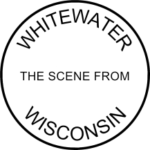 This is the fifth post in a series considering related local topics of cultures & communications within the city.
This is the fifth post in a series considering related local topics of cultures & communications within the city.
To love something truly is to see it clearly, with dry eyes. So if federal census data show that the largest group in the city – by far – is college-age residents 20-24 (5,300), and that those young residents easily outnumber traditional working-age residents (3,892), what can one say about those 25-64 year-old working-age residents? (Quick note: I’m in this age bracket.)
The first thing one can conclude is that in absolute number, they’re fewer than nearby Fort Atkinson. I’ve written on this before (see, Data Around Whitewater’s Size), but it bears repeating (data from the American Community Survey using 2015 data as the 2016 data do not have demographics by age):
Whitewater, aged 25-64: 3,892.
Fort Atkinson, aged 25-64: 6,454.
There are implications to a smaller working-age population than a student population.
When working-age residents 25-64 insist they’re the real town residents, they’re doing so only from innumeracy or arrogance: residents aged 25-64 are a demographic minority.
There’s a second implication, too: in absolute terms, the 25-64 age group isn’t so large as it presents itself.
Indeed, it’s not so relatively large within the city, or relatively compared to a nearby city.
So if there’s a claim to a superior position, that group (of which I am a part) does not have a numerical claim to superiority.
Previously: Parts 1 (introductory assumptions), 2 (population), 3 (oasis), and 4 (demographics).
Tomorrow: Part 6.
